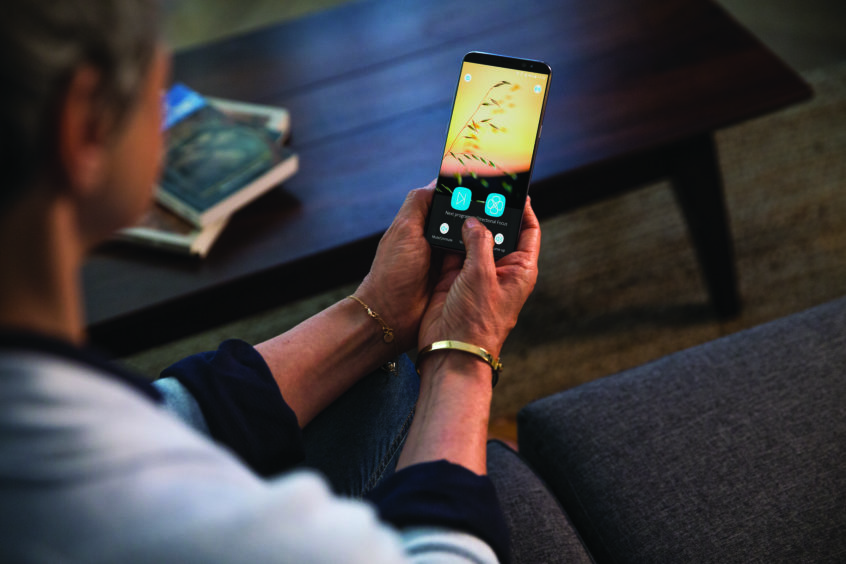If you go to the App store on your cell phone and search for hearing apps, you’ll find everything from decibel meters to hearing tests to apps that claim to improve your hearing. But how do you know if an app will help you?
Here we highlight two apps that many people with hearing challenges are finding helpful.
Stream Live TV with Tunity App
Listening to the television is a challenge for many with hearing loss. Tunity allows users to hear live audio from the television directly on their mobile devices, or even through Bluetooth-enabled hearing aids.
The process is simple for the user. Once Tunity is downloaded to your smartphone, just scan the television you’re watching and Tunity syncs to that channel’s audio using a patented deep learning and computer vision technology.
The audio can then be played on your smartphone through its speaker. Or, if you’d prefer, plug in a set of headphones and you can listen to the audio privately, controlling the volume on the headphones. If you have Bluetooth-enabled hearing aids, this app can stream the audio directly to your hearing aids via a smartphone.
In each case, having the audio played on a smartphone speaker, headphones, or directly to your hearing aids, allows you to control the volume for your listening comfort, and hear a television that you otherwise might have problems hearing.
So, if hearing the TV is a problem for you, whether your hearing aids are Bluetooth-enabled or not, this app offers a free and simple solution so you don’t have to miss out, or disrupt the listening experience for those around you. Tunity currently works with over 100 U.S. channels, but only on current broadcasting, meaning the show must be airing at the time of use—it doesn’t work on programs you’ve previously recorded.
The app is free. You can download it from Apple’s App Store or Google Play.
Live Captioning with Google
For individuals who have difficulty hearing, or who are deaf, captioning improves access to digital media.
Live Caption from Google works with videos, podcasts and audio messages, across any app running on an Android Q phone—even stuff you record yourself. As soon as speech is detected, captions will appear, without ever needing Wifi or cell phone data, and without any audio or captions leaving your phone.
Live Caption converts speech to text in real-time. Utilizing breakthroughs in machine learning, it provides immediate transcriptions of YouTube videos, podcasts, video chats, Skype calls, and audio and video recordings created by the user. All processing takes place on the user’s Android phone.
Live Caption works in the background without interrupting other apps. And because it doesn’t need to send data to the cloud for processing, it eliminates delays from sometimes spotty wireless connections.
Live Relay Feature
For regular phone calls, there is also a Live Relay feature. This can be helpful for people who are deaf or have severe hearing loss, and for those who have trouble being understood on the phone.
Live Relay allows the phone to listen and speak for users while they type. Because the responses are instant and provide real-time writing suggestions, users can type fast enough to conduct a normal phone call.
Live Caption and Live Relay are practical applications that utilize the Live Transcribe technology from Google. Live Transcribe is an artificial-intelligence-based technology that uses machine learning to constantly improve speech-to-text conversion. It’s being integrated into apps for personal computers and mobile phones and supports external microphones in wired headsets, Bluetooth headsets, and USB mics.
Hearing Aid Apps
If you are a hearing aid user and you have newer technology, be sure to download the latest app that corresponds to your hearing aids (Widex, ReSound, Phonak, Starkey, Oticon, etc.).
Each of these hearing aid manufacturer apps includes tools that allow you to manage your listening preferences and hearing profile. Plus, many have additional features many users find practical and helpful, such as “Find my hearing aid” or indicators that tell you when to replace your batteries.
If you have questions about the latest hearing aid technology, schedule an appointment with a doctoral-level audiologist at Associated Audiologists.



